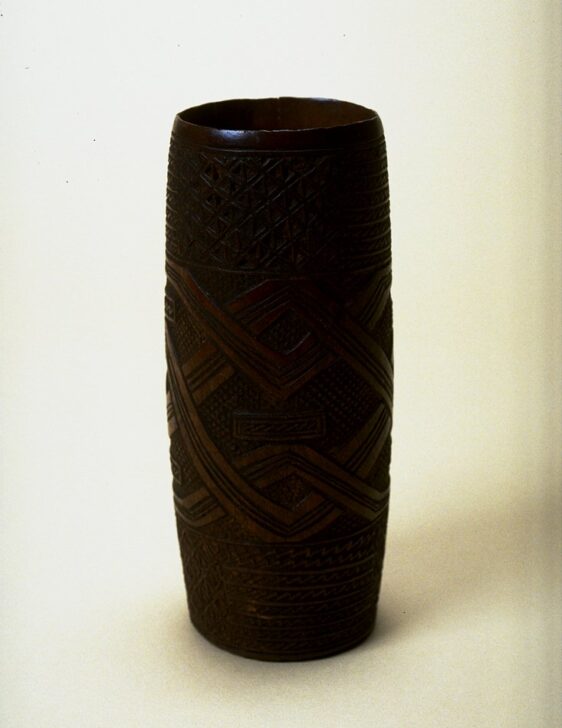Palm Wine Cup
Kuba

Description
March 28, 2009
An impressive array of visual arts conveyed rank and title in the Kuba Kingdom. In the nineteenth and early twentieth centuries, palm wine cups fashioned from the horns of the bush buffalo were the prerogative of Kuba warriors. This example reveals the elegant surface decoration for which Kuba artists are renowned. Its concentric circles, geometric shapes, and beadlike bands carved in relief follow the natural contours of the horn and resemble women’s scarification patterns. This horn shows an excellent local repair—a metal suture sewn at the mouth to stabilize a crack. The linear, interlocking design that covers the surface of the cylindrical wooden cup is derived from Kuba textile patterns.
The flourishing of the Kuba economy and its decorative arts came to an abrupt end in the late nineteenth century with the imposition of colonial rule, taxation, and forced labor in the rubber trade. Western collectors enthusiastically swept up remarkable pieces such as these. By the mid-twentieth century, missionary efforts to revive Kuba woodcarving and weaving led to the creation of workshops that produced objects for tourists and for export. Today, the Kuba produce textiles for themselves as well as for sale, while decorative woodcarvings are produced solely for the export market.
Subject Matter:
In the nineteenth and early twentieth centuries, palm wine cups carved elaborately from wood were high prestige objects, and were commissioned or purchased by individuals who could readily afford them. Such cups were public displays of personal success and accomplishment. This cylindrical cup features the Kuba aesthetic preference for geometric motifs and linear, interlocking surface designs that cover the entire surface of the object.
Physical Description:
Cylindrical, wood carved cup with geometric motifs and linear, interlocking lines that cover the entire surface of the object.
Usage Rights:
If you are interested in using an image for a publication, please visit https://umma.umich.edu/request-image/ for more information and to fill out the online Image Rights and Reproductions Request Form.